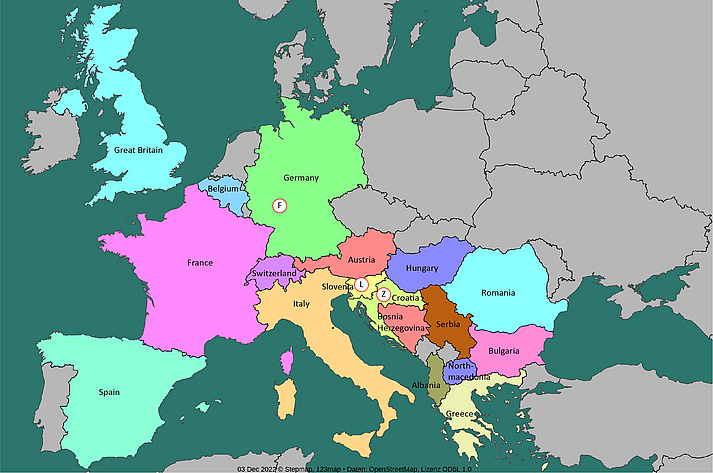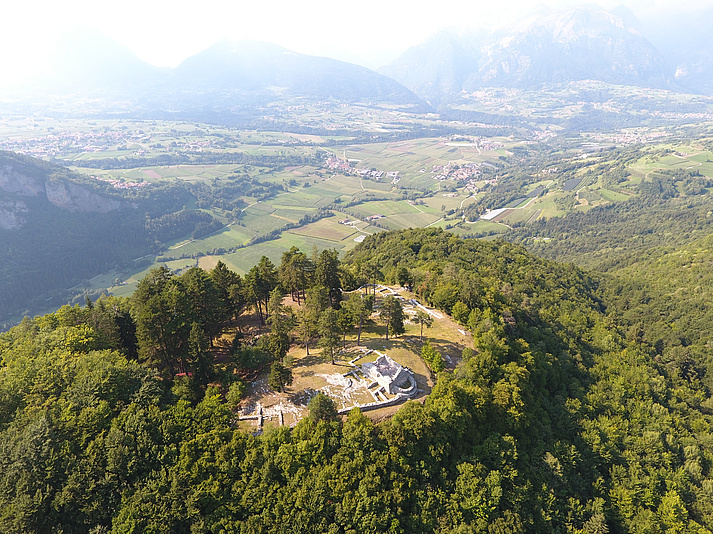
About the network
The international scientific network "LAHIS" (Late Antique Hilltop Settlements in Europe) has been in existence since 2022. Its aim is to provide an interdisciplinary and international platform for the exchange and dissemination of knowledge on the typical settlement form of the hilltop settlement. 40 archaeologists and historians from 18 European countries are represented in the LAHIS network. With a pan-European view on hilltop settlements, research competences are to be bundled, theories, methods as well as the state of research and perspectives are to be comparatively considered and discussed. Furthermore, the network focuses on collecting and communicating our knowledge about Late Antique hilltop settlements. In addition to the development of a database, an exhibition on Late Antique hilltop settlements in Frankfurt am Main, Ljubljana and Zagreb is being designed for the general public.

Settlements in topographically significant positions or exposed locations are referred to in research as hilltop settlements or hilltop fortresses. Many of these sites have been occupied again and again over the centuries: from Bronze Age fortifications to High Medieval castles. In cultural, local memory, these places are often associated not only with cultic-religious but also with identity-forming and perhaps legitimising ideas.
The change from valley to hill during Late Antiquity can only be researched and explained against the background of the transformation of the Roman world. Although hilltop settlements are attributed an important role in the cultural realignment of many regions between Antiquity and the Middle Ages, there is a lack of classification of the phenomenon. Hillforts are already known from the 3rd/4th century within and in the forefront of the borders of the Imperium Romanum and gain increased importance during the 5th/6th century with the decline of the ancient urban landscape and state control. Depending on their political environment and their range of features and finds, hillforts may have fulfilled different functions, whether as a short-term refuge, a refuge castle or military station, or as a permanent settlement, a sacred centre or a regional and/or supra-regional seat of power. The temporal development levels have produced different manifestations of hilltop settlements, and the motives and location also play an important role.

